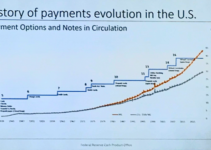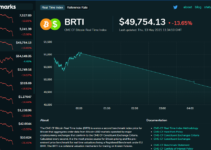The world of payments is going digital. That’s been a story for years, now – and one that took on a new urgency in the wake of a pandemic that demanded real changes to the ways banks do business. But for financial institutions to really achieve the kind of digital transformation that the times demand, they’re going to need more than a website or online balance checking.
FinTech provider Computer Services, Inc. (CSI) outlined some of the remaining challenges in a 2021 executive report, including a survey of more than 270 US banking executives. And the importance of digital transformation hasn’t been lost on any banks from small to large –two-thirds of those surveyed listed digital investment as a top priority for increasing market share in 2021.
“That focus is really warranted, because those executives believe the surge in digital banking usage isn’t going to slow down even after than pandemic has passed,” said Steve Kent, senior director of digital strategy at CSI. “This has driven a lot of the digital laggards out there to start using these solutions out of necessity, and what most of them have probably found is that they should have been doing this long ago.”
But even with broad agreement that digital initiatives are vital to continued success for financial institutions, in many places the idea remains a nebulous one; a whole universe of potential services with outcomes that most banks have not been prepared to build out full use cases for in the past – getting past that to an actionable agenda is going to require a fundamental shift away from legacy thinking.
“Likely because of advancing consumer expectations, the community banks in particular view themselves as really not executing on digital transformation,” Kent said. “When the pandemic became a reality in the US last March, banks felt less prepared for digital transition than in most other areas of their pandemic response – other areas, like PPP, were less of a challenge.
“This really isn’t surprising given that, by the survey, they didn’t feel they were executing all that well on digital transformation even prior to the pandemic. The transition suddenly being needed at a moment’s notice left many banks with a digital experience that couldn’t meet their customers’ needs.”
For a number of banks, this translated to half-realized digital services; online account opening processes that roadblock customers midway through with instructions to visit a branch, or online banking options that don’t go much deeper than the ability to check account balances. Jim Marous, co-publisher of The Financial Brand, calls it ‘faking digital.’
How long does it take to open an account on a website or mobile phone?” Marous said. “Over 80% of organizations surveyed said it took over 5 minutes on their website – 82% said it took more than five minutes on their mobile app. This is not good enough.
“While we’ve enabled digital account opening and lending, we haven’t done it in a way where the consumer feels like we’re understanding their needs. Go and open up a brand new Apple Card: there’s only five slides you have to respond to.”
What Marous underscores is a reality that many community banks are beginning to understand in a competitive market: just having a rough capability built in is no longer enough. Digital transformation is about more than a one-to-one replication of the old paper forms customers filled out during branch visits: banks have to take full advantage of the new ways digital empowers them to do business.
“We need better onboarding experiences,” Marous said. “What I mean by that is personalizing the cross-sell experience for the benefit of the consumer. If you have customers who haven’t refinanced their mortgage in five years, they’re overpaying. If you don’t serve them, they will find someone else.”
And that kind of personalization is going to require a real investment in making smart use of data and analytics – making the relationship between bank and customer closer in ways that other digital-first companies like Netflix and Apple have long-since embraced in their content recommendations and other personalized offerings. That can be a daunting task, but there’s help to be had for those who look.
“The technology and the partners are out there to help you get there,” Marous said. “You don’t have to build this yourself. You don’t have to travel this path as if it were the first time.”


